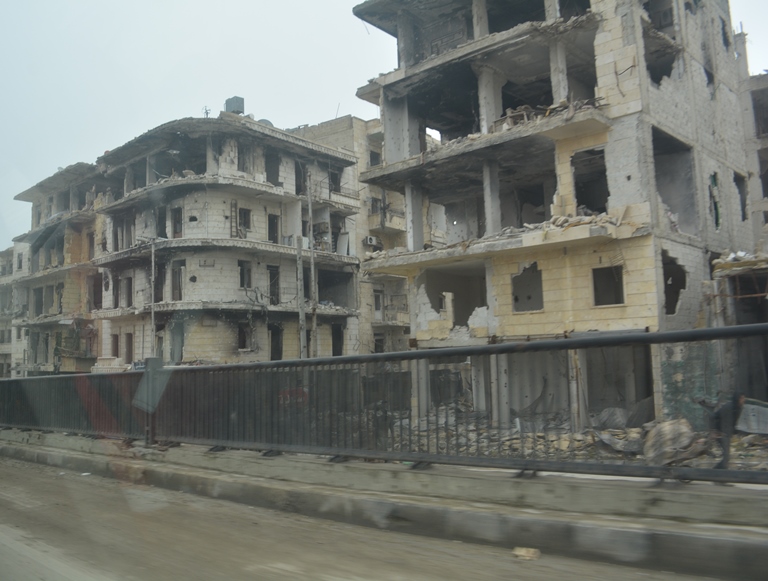A Lent of Tears
By Archbishop Samir Nassar
An apocalypse
In six years of war the face of Syria has been completely transformed.
A large wasteland of ruins, pulverized buildings, burned out homes, neighborhoods turned into ghost towns, villages razed to the ground … and more than 12 million Syrians (half the population) don’t have roofs over their heads …
They form the largest mass of refugees since World War II. Several million have left the country in search of a kinder environment. Many are depending on hand-outs in miserable camps, many have drowned, and many stand in long lines at embassies. They have become a nomadic people in search of a land that will welcome them. How can Syria escape from this torture?
Broken families
Families, the bulwark that saved the Church and the nation, have been brutally shaken up. It is almost rare to come across a family entirely intact. The violence has dispersed these foundation stones… some are in their graves, others in exile, or in prison or at the front lines.
It is a very sad situation that has sent the few that remain into a life of mendacity, depression and anxiety.
Engaged couples, separated by the exodus, the emigration of one of the partners or enlistment in the military, are unable to marry—with the grave difficulty of finding adequate shelter finishing off remaining hopes.
An asset for the future is collapsing.
How can we continue on our way without families or with crippled families?
Childhood sacrificed
Children are the most fragile. They have paid dearly for this pitiless violence. UNESCO reports that more than 3 million children are not able to go to school; priority is given to their physical survival; those that still attend school have seen the level of teaching drop considerably because of the great overcrowding of those schools that are still functioning and because so many teachers have fled. The educational system is falling apart completely.
Centers that offer psychological support are overrun and overwhelmed by the gravity of the traumas and psychological scars.
How can we restore the spirits of these children damaged by violence and scenes of barbarism?
Parishes under threat
Parishes that have seen the number of faithful drops sharply along with a decline in pastoral activities are depriving priests of their support network, leaving them without essential human and spiritual support. The Church in Damascus has seen a third of its priests (27 pastors) flee, a real blow that has further weakened the place and role of the Christian minority that was already in decline.
Other priests who are still staying put are not feeling secure and are contemplating their eventual departure.
In this waiting mode, they provide socio-humanitarian support to stricken families.
How can we remedy this alarming bloodletting in terms of priests and faithful?
Can we imagine a Church without priests?
Between bread and freedom
Syrians are no longer looking for freedom. They are waging a daily battle to find bread, water, gas, fuel that gets rarer by the day. Electrical black outs, frequent and long-lasting, are darkening our evenings and curbing social life.
There is an ongoing search for brothers, for parents and friends who have disappeared—a search conducted with a great deal of discretion, worry and hope.
Finding a humble place to live, some shelter in a country of ruins has become the impossible dream of families and above all of young engaged couples.
Between a battle for freedom and the search for bread—what road must shall choose?
This small Syrian people live out this devastation with much bitterness that can be seen in their silent looks and in streams of tears.
This bitter Lent of 2017 present us with a time in the desert, to reconsider the Church’s engagement amidst our suffering faithful in order to better guide them toward the Resurrected Christ, Light of the world, Savior of men, who tells them: “Come to me, all you are weary and burdened” (Mt. 11:28).
Lent 2017
Archbishop Nassar is the Maronite bishop of Damascus


